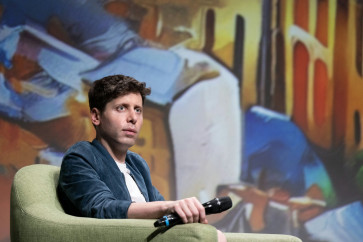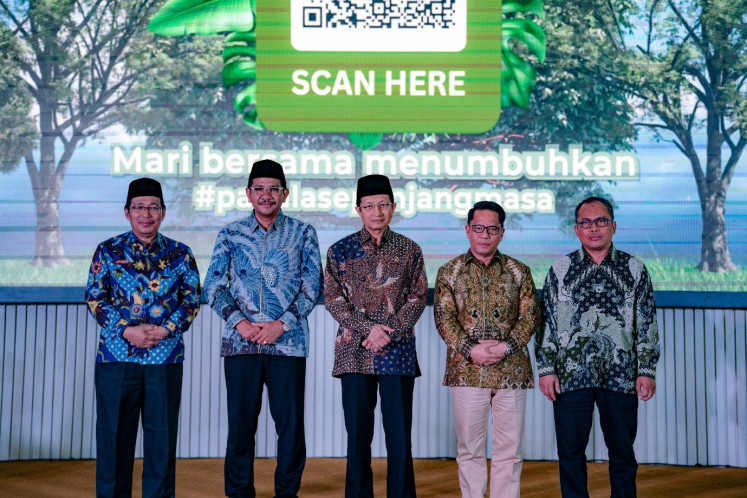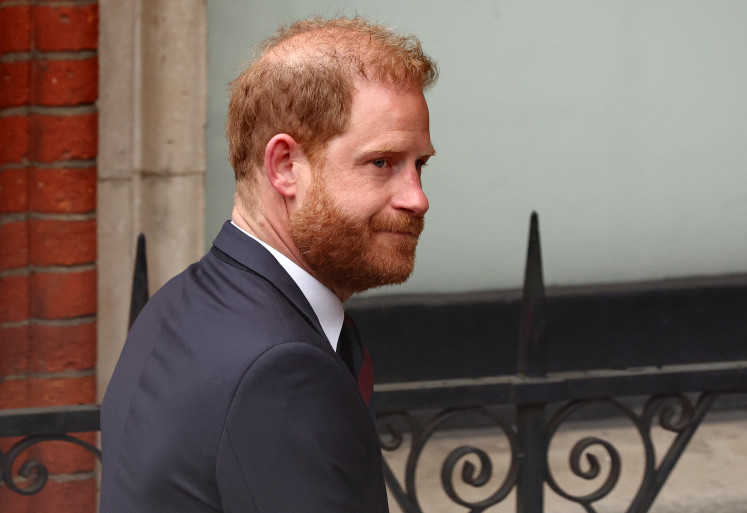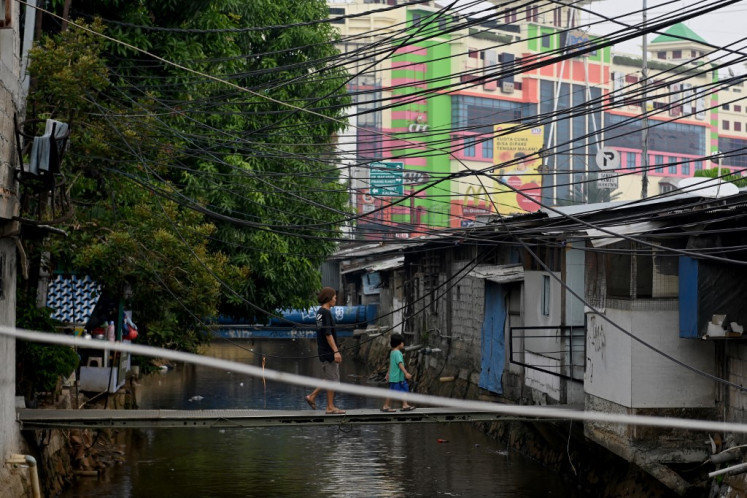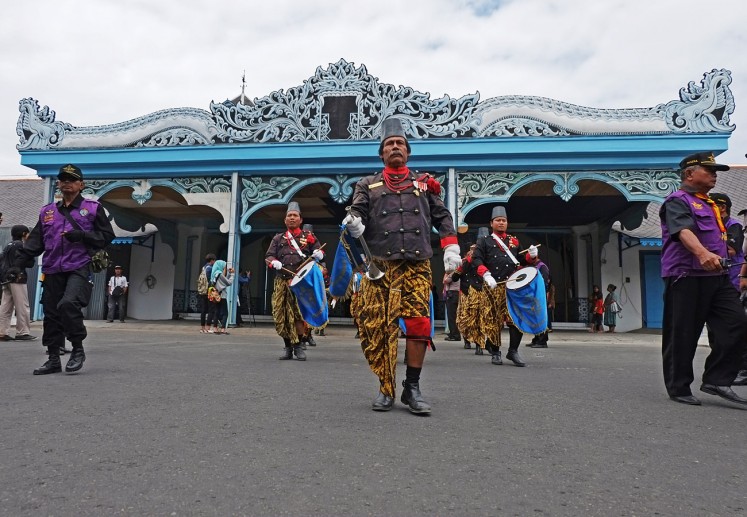'Shakuhachi' concert introduces Japanese music to Indonesia
The Japanese bamboo flute, shakuhachi, he played emitted a powerful sound.
Change text size
Gift Premium Articles
to Anyone
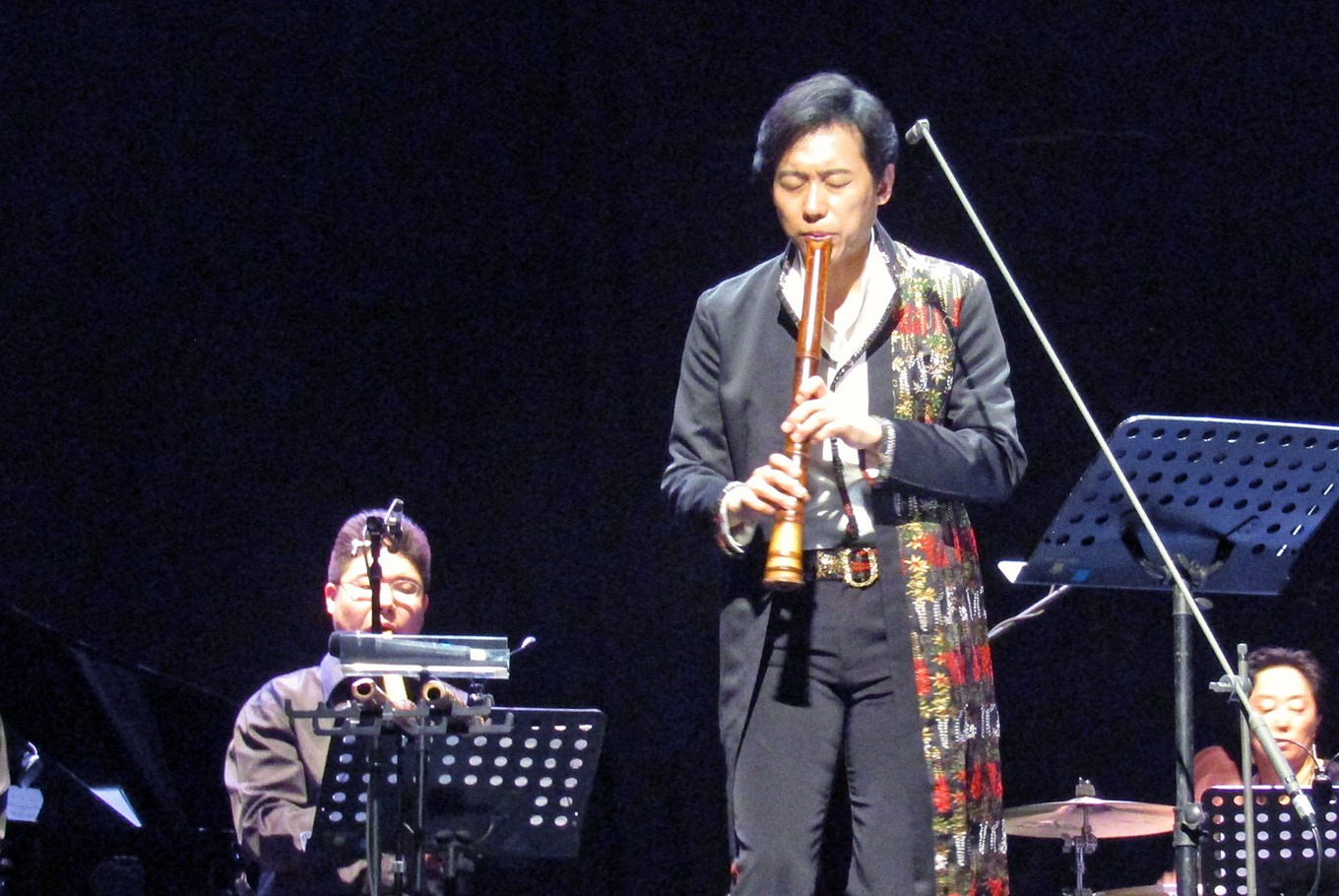 Sound from the East: Japanese musician and composer Dozan Fujiwara plays the shakuhachi (Japanese traditional flute) during a performance at the Societet Militer building at Yogyakarta Cultural Park in Yogyakarta. (JP/Bambang Muryanto)
Sound from the East: Japanese musician and composer Dozan Fujiwara plays the shakuhachi (Japanese traditional flute) during a performance at the Societet Militer building at Yogyakarta Cultural Park in Yogyakarta. (JP/Bambang Muryanto)
S
tanding alone in the middle of the stage in a kimono, Japanese musician and composer Dozan Fujiwara opened his concert with his own composition “Ku”, which literally means “sky” or “empty” in Japanese.
The Japanese bamboo flute, shakuhachi, he played emitted a powerful sound. At times, it reached high tone, and then gradually descended before finally fading away like the wind.
The four-minute composition made concertgoers at the Yogyakarta Cultural Park’s (TBY) Societet Militer building imagine the serenity and beauty of a village in rural Japan with blossoming sakura trees, where Buddha sought the value of truth.
Fujiwara presented the Suara dari Timur (Sound from the East) concert from Aug. 4 to 8 in Jakarta and Yogyakarta, as an initiative of Japan’s Min-On Concert Association.
Held as part of the Min-On Global Music Network program to commemorate 60 years of Indonesia-Japan ties and the 50th anniversary of the Min-On Concert Association, the concert also involved Indonesian musicians.
Min-On Concert Association president Kazuto Ito said that the association was established by Daisaku Ikeda in 1963 to help build world peace and to strengthen global relationships through music and culture. “We have introduced Japanese music to 108 countries,” he said.
He added that the association had invited 10 performing arts groups from Indonesia since 1973. The first invitee was the Siswo Among Bekso dance club from Yogyakarta Palace.
Fujiwara said that he was pleased to hold a concert in Yogyakarta. “This is my first time to Yogyakarta,” he said.
He told the audience that the shakuhachi has existed hundreds of years in Japan. It had five finger holes and was played using a respiratory technique.
He then played his second song, “Haru no Umi” (Spring Ocean) accompanied by the koto, the Japanese board zither, which was a calming composition.
“I chose this song because it is very popular in Japan. It was composed 80 years ago by Michio Miyagi, a blind composer and koto player,” he said.
Out of the 12 songs played in the concert, one was familiar to the audience, with many audience members singing along with it. “Kokoro no Tomo”, which was popularized by singer Mayumi Itsuwa, was very popular in Indonesia in the 1980s.
Fujiwara played six of the 12 songs with six other Japanese musicians — Renzan Kudo, Kohzan Shiba, Hozan Murasawa, Keizan Tanabe, Seigo Takimoto and Yuko Nakakita — playing shakuhachi, piano, percussion and koto.
Three other songs were performed in collaboration with Indonesian musicians — Joel Tampeng (guitar), Darman Merdeka (percussion) and Firman Djalut (rebab) — with Fujiwara exchanging his kimono for a long suit of his own design during the collaborations, One of the songs was Gomloh’s “Kebyar-Kebyar”.
During the 90-minute concert, the Indonesian musicians played two Indonesian songs, “Ceh” by Joel Tampeng and “Lingkaran Aku Cinta Padamu” (I Love Your Circle) by Sawung Jabo mixed with the Papuan folk song “Yamko Rambe Yamko”.
The enthusiastic audience called for an encore following Fujiwara’s performance of the final song, “Kochi” (Wind from the East). Fujiwara responded with “Kereta Malam” (Night Train), an old composition by noted Indonesian dangdut maestro Rhoma Irama.
Megatruh, a student at the Indonesian Arts Institute (ISI) Surakarta, said she attended the concert because she was curious about the shakuhachi.
Yoyo Hanantoko, a concertgoer who came with his wife and child, said he enjoyed the concert very much. He said he came specifically to watch and enjoy the sound of the shakuhachi. “I think a cultural event like this can strengthen the cultural relationship between Indonesia and Japan,” Yoyo said.
Speaking to journalists, Fujiwara said that during the Edo era, the shakuhachiwas a special musical instrument because only Buddhist monks played it for meditation.
“The instrument was not played for the public, but played as an instrument to have a dialog with oneself,” he said in Japanese.
Yet, when the Meiji Restoration arrived in the 1860s, a policy was made to weaken the role of Buddhism. The shakuhachi was to be destroyed, but someone saved the instrument, and Japanese musicians have played theshakuhachi ever since.
“The shakuhachi is one of the most well-known traditional Japanese musical instruments in the world today,” said Fujiwara.


